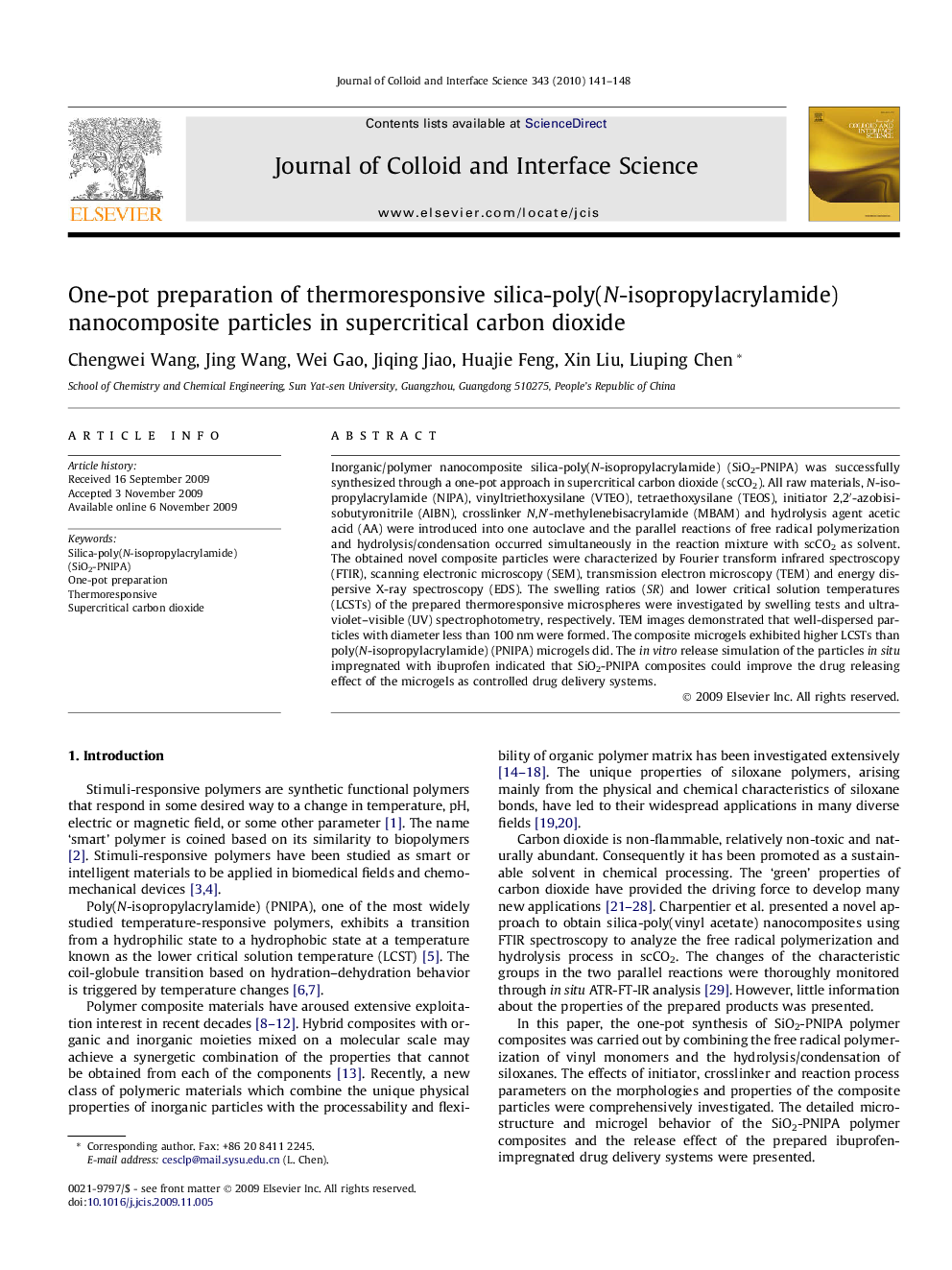| Article ID | Journal | Published Year | Pages | File Type |
|---|---|---|---|---|
| 609420 | Journal of Colloid and Interface Science | 2010 | 8 Pages |
Inorganic/polymer nanocomposite silica-poly(N-isopropylacrylamide) (SiO2-PNIPA) was successfully synthesized through a one-pot approach in supercritical carbon dioxide (scCO2). All raw materials, N-isopropylacrylamide (NIPA), vinyltriethoxysilane (VTEO), tetraethoxysilane (TEOS), initiator 2,2′-azobisisobutyronitrile (AIBN), crosslinker N,N′-methylenebisacrylamide (MBAM) and hydrolysis agent acetic acid (AA) were introduced into one autoclave and the parallel reactions of free radical polymerization and hydrolysis/condensation occurred simultaneously in the reaction mixture with scCO2 as solvent. The obtained novel composite particles were characterized by Fourier transform infrared spectroscopy (FTIR), scanning electronic microscopy (SEM), transmission electron microscopy (TEM) and energy dispersive X-ray spectroscopy (EDS). The swelling ratios (SR) and lower critical solution temperatures (LCSTs) of the prepared thermoresponsive microspheres were investigated by swelling tests and ultraviolet–visible (UV) spectrophotometry, respectively. TEM images demonstrated that well-dispersed particles with diameter less than 100 nm were formed. The composite microgels exhibited higher LCSTs than poly(N-isopropylacrylamide) (PNIPA) microgels did. The in vitro release simulation of the particles in situ impregnated with ibuprofen indicated that SiO2-PNIPA composites could improve the drug releasing effect of the microgels as controlled drug delivery systems.
Graphical abstractThermoresponsive silica-poly(N-isopropylacrylamide) nanocomposite particles were prepared through a one-pot approach in supercritical carbon dioxide.Figure optionsDownload full-size imageDownload high-quality image (69 K)Download as PowerPoint slide
